
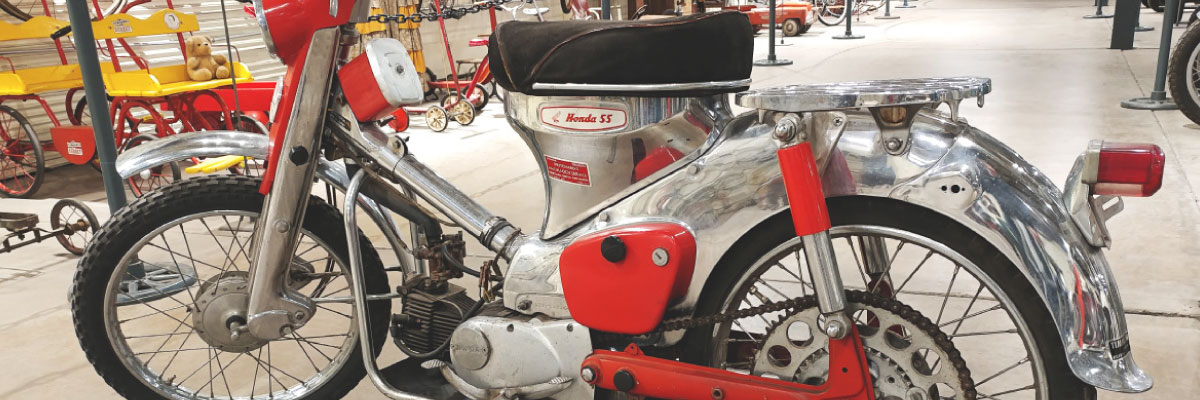
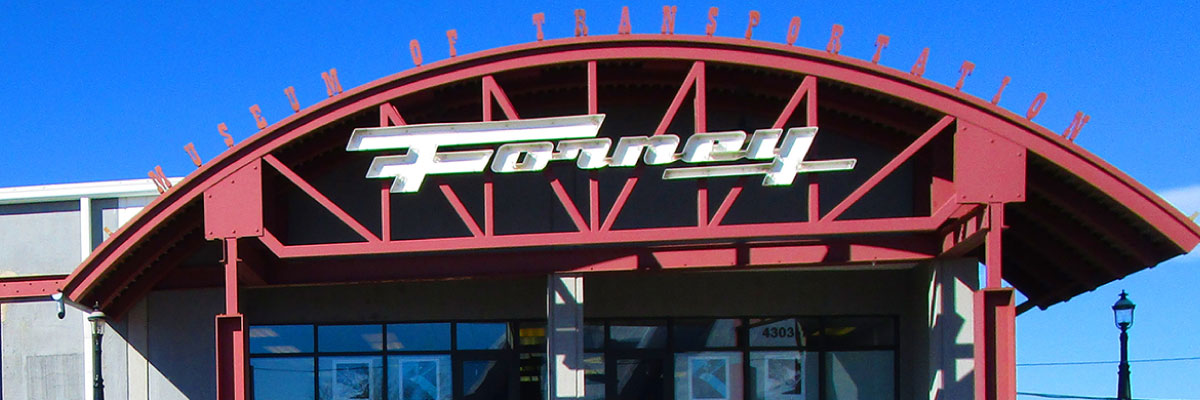

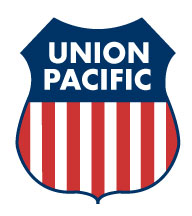
The following is the story of the fatal railroad accident that occurred at Red Desert, Wyoming between Rawlins and Green River. Dispersed throughout the article are italicized quotes by Jim Dover who had a first hand experience with the crew and at the accident scene.
On April 27, 1953 the crew of the Union Pacific 4005 freight train started out on a routine haul across the open prairie of southern Wyoming. Engineer Leo Murry, Fireman Lawrence (Ed) Endres, and Brakeman James R. Anderton made up the head end crew. Conductor James Walker and Brakeman Ivan Shurigar made up the rear end crew. Sixty-two cars and a caboose followed the giant 600-ton ‘Big Boy’ locomotive and it lumbered along the tracks.
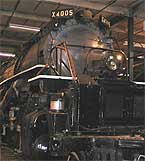
“I began working for the Union Pacific Railroad in 1951-52. My duties were that of a ‘shagger’ or callboy. The Dispatcher would give me a list of crew names both head end and rear end and I would run up and down the back streets of Rawlins haunting pool halls, bars, and all the popular spots that even a young man was not supposed to know about at the tender age of 16.”
“It was some time around 3am and I was given a crew to call for a westbound that would run from Rawlins to Green River early that morning. I remember that the fireman, a fellow named Ehlers (Endres), had come in early because he was just discharged from the Korean War and had come back to work for Union Pacific and wanted to sort of familiarize himself again with the Big Boys. He and I stood there talking while waiting for the Engineer, Hog Head they were called in those days, to show up so they could go from the yard office where the only warm stove was going and go to the east end and pick up their engine for a drag west. I stood just outside of the Dispatch office and waved to the Engineer as that monster of an engine thundered by shaking the cement floor and rattling the windows.”
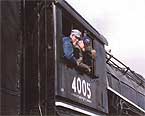
At 9:10 a.m. the train passed through Wamsutter, Wyoming, headed westbound not knowing that in just 10 minutes the unthinkable would happen. The morning was cloudy with a light mist and the 0.43 percent descending grade made for easy travel. All seemed normal.
At this same time just 8.5 miles to the west another event was unfolding. A section gang stationed at Frewen traveled 3.6 miles to the east to Red Desert on a track motorcar to obtain a supply of switch ties. The foreman and four section workers arrived in Red Desert and were approached by a sheep herder requesting assistance in getting his sheep across the tracks. (The size of the sheep herder’s herd is not known, however, the average ranch in 1949 had 1,100 head of sheep). The foreman called to receive a track line-up which read, “Westbound, Extra 4005 West, Red Desert 9:15 a.m. Westbound, Extra 1480 West, Red Desert 9:50 a.m. Eastbound, Extra 3969 East, Red Desert 9:15 a.m. Eastbound, Extra 1470 East, Red Desert 9:55 a.m.”
After he received the line-up information the foreman assigned one section man to proceed eastward and other westward to provide flag protection at each end of the side track. After one eastbound and one westbound train passed they were to provide protection for the sheep herder. As added protection, two other section men were to open a switch in each main track, which led to the siding. This would display a block signal down the track in each direction warning any unannounced approaching trains to slow down. The foreman unlocked both switches and the section men were instructed to open the switch on his hand signal. The foreman then walked back to the sheep herder, some 300 yards from the switch, to tell him what the men were going to do.
As the 4005 approached the east end of the Red Desert siding the Union Pacific section man opened the siding switch and then, seeing the massive locomotive barreling down on him, frantically made an unsuccessful attempt to close it before the engine passed. The engineer made an emergency application of the brakes as the engine entered the siding.
“I’m only speculating now but I can visualize the fireman Ehlers (Endres) and the head brakeman screaming at the top of their voices to the engineer, STOP, STOP, RED SWITCH AHEAD! But it was too late.”
The 4005 entered the open switch at 50 mph causing it to careen off the rails and skid along its left side tearing up rail and roadbed. The locomotive, tender, and first 18 cars derailed. The cab of the locomotive was destroyed as the tender tore into it twisting and smashing the metal. The first 12 cars were badly damaged and piled in a 70' high heap. The thirteenth to the seventeenth cars were somewhat damaged from the force of impacting against each other and toppling off the rail. Scattered about the scene was the train’s load: tractors, dead hogs, typewriters, sewing machines, and other merchandise.
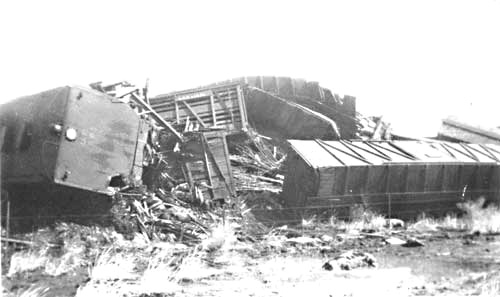
The engineer Leo Murry and fireman Lawrence Endres were killed instantly, and amazingly the front brakeman, James Anderton, was alive.
“When I arrived on the scene of the derailment, live steam was still shooting at least a hundred feet into the air as they had not been able to get close enough to try and rescue the crew on the head end. The rear end crew, the conductor, and rear Brakeman had survived and were just walking around dazed.”
The rear crew did not know anything was wrong until they saw the emergency signal from the engineer. When they looked out and saw the cars piling they both rushed out of the caboose. Walker headed to the front of the train and using a dispatchers phone called in what had happened. He could not get near the wreck, as the hissing steam billowed around the injured train. It took nearly 25 minutes for the steam to subside.
Shurigar protected the rear of the train by walking a mile back east to set two torpedoes on the track so that the engineer of an oncoming train would be warned and not collide into the back of the derailed train.
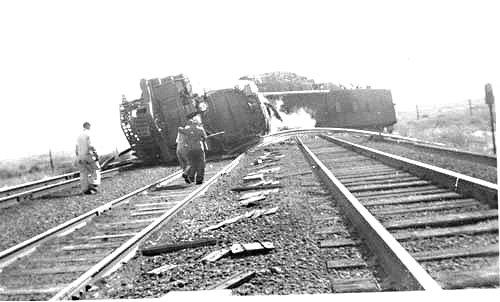
Brakeman Anderton’s left leg was twisted and pinned between a wooden seat and the steel side of the cab. He was trapped in an area of the cab no larger than 18” high and four feet wide for ten hours while rescue workers removed tons of coal and cut through steel to free him. Anderton asked rescuers for a drink of water and a cigarette. A doctor was able to reach into a narrow opening and administer a dose of morphine to subside Anderton's terrible pain. Anderton later told rescuers that his hands hurt and that he was “chilling a little” but could no longer feel pain in his foot.
Anderton also told a rescue worker, “He threw it right in front of us. The switch, they threw it right in front of us, they didn’t give us a chance. I felt the engine rock. I don’t know how many times it rocked. The next thing I knew I felt the steam hitting me in the face and I thought I was a goner. All I could think of was getting my hands over my face.” Anderton died at 10:57 a.m. on Wednesday, April 29, from second and third degree burns covering 80 per cent of his body, severe prolonged shock, and other complications.
Early reports indicated that the engineer and fireman were alive after the accident, as two workers said they spoke to the men. This later turned out to be false; the two workers were actually talking to each other from opposite sides of the train.
Track crews worked swiftly to clear the wreckage. East and west rail traffic was delayed for nine hours until the construction crew could install a shoofly to route rail traffic around the accident site. Priority was to resume a normal traffic schedule. Some westbound trains were re-routed through Cheyenne on the Denver and Rio Grande.
Many of the four car loads of pigs were killed upon impact. According to workmen at the site some pigs provided comic relief during the emotionally and physically draining rescue operation. Occasionally a pig would regain consciousness and with a terrific grunt would take off running through curious bystanders.
"The Lincoln Highway 30 at that time was just a single lane on each side and when I arrived at Red Desert the sight was shocking. Railroad cars had flipped completely over the bus stop and were laying everywhere. A lone Highway Patrol car was out there trying to direct traffic but was in a very dangerous situation in that the train had been hauling those giant Iowa pigs to market that weigh about 600 pounds and they were running around crazy in the head after the derailment attacking people. The Highway Patrolman was having to shoot them with this service revolver."
“Several days later I was back at work on the graveyard shift and the Dispatcher told us the engine from the derailment was being brought back in and was just at the west end of the yard getting ready to come past the little Dispatch office/passenger depot. We all stood outside and in the still of darkness, not yet visible, we could hear this groaning and wrenching of metal coming very slowly down the rails being brought in behind the wrecking train, it was the ‘Big Boy’ and it gave you a very eerie feeling as it became visible in the old lamps of the Dispatch office, slowly it came into view and if ever I thought I had seen a ghost this was it. I did not know a ‘Big Boy’ could die but there it was and how sad it was just limping along like an old gray horse with one leg broken. The cab was completely gone, only the gray color of the firebox was visible and some of the side rods were missing and it looked as if even the frame had been broken. It just lumbered by all us, standing there with our mouths open not believing what we were seeing, this once huge, big, beautiful thing that was once a living machine of giant steel. It disappeared into the darkness like it came, being dragged like a person to the grave, at the east end of the yard for temporary storage. I could almost see Fireman Ehlers (Endres) waving to me as it went past.”
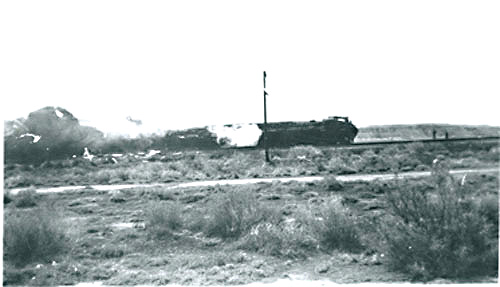
Anderton, before he died, provided some key information in determining exactly how the accident happened and who was at fault. Anderton noted that he and Endres had seen a man throw the switch and yelled to the engineer. Murry ran across the cab, looked, and then ran back and ‘big-holed’ it. Big-holed was the term used to describe applying the emergency brakes.
During the investigation Puerto Rican section worker Ralph Vicenty, through an interpreter because he did not speak or understand much English, said the foreman had shown him how to operate the switch and when the foreman walked back to the sheep herder it was the foreman who left the switch in the open position. It was later determined that this could not have been the case because the open switch would have displayed a signal to the oncoming 4005 providing enough time to stop safely.
Union Pacific Railroad and Interstate Commerce Commission officials reached the conclusion that Kenneth M. Mayfield, foreman, and Ralph Vicenty, section worker who had been working with the UP for only one hour and twenty minutes, were responsible for the accident. There were considerable variances between their stories, each blaming the other. The Interstate Commerce Commission, Union Pacific Railroad, and local officials investigated the accident. A meeting closed to the public and press was held to determine how the accident occurred and who was responsible. The Sweetwater County coroner’s jury found Mayfield guilty of negligence for putting an irresponsible man in control of the switch. Section worker Vicenty was found responsible for throwing the switch onto a side track.
“The next time you climb up into the cab and look around, see if you see the young eager face of Fireman Ehlers (Endres) sitting on the fireman’s side screaming at the top of his voice, “STOP-STOP-STOP!” Some day I will get back to Denver, I will make a special trip to come see an old friend, 4005, and climb inside and say hi to Ehlers (Endres).”
By 1962 all twenty-five of the ‘Big Boys’ were retired. Today eight of the original twenty-five are in museums across the nation. Visit the Forney Museum of Transportation at 4303 Brighton Blvd., Denver to see the Union Pacific 4005. Our 4005 was rebuilt by Union Pacific at its Cheyenne facility. It is possible a different tender was used in the rebuilding. The Big Boy shows very little evidence of the wreck damage today.

Lawrence Edward Endres, 23
Endres was born July 4, 1929 at Las Animas, Colorado, and was a graduate of Rawlins high school. He was a member of the Brotherhood of Locomotive Fireman and Engineers. Endres had just returned from a two-year tour of duty with the railroad division of the army in Korea and was the son of Mr. & Mrs. Roman Endres of Rawlins.
Leo Glenn Murry, 42
Murry was an employee of the Union Pacific Railroad for 20 years and an engineer at the time of his death. He was survived by his wife Lillian and two children, Patricia, 13, and Michael, 9. He was a member of the Fraternal Order of Eagles, Council 2128, Knights of Columbus, the Order of St. Christopher for Catholic Railroadmen, Junior Old Timers, and the Brotherhood of Fireman and Engineers.
James Robert Anderton, 36
Anderton was born April 17, 1917 in Robertson, Wyoming. He attended schools in Robertson and at Mountain View, Wyoming. He was a veteran of WWII and a member of the Brotherhood of Railroad Trainmen and the Fraternal Order of Eagles No. 2350 at Green River. He was survived by his wife Ann, and two children, Lola Jean, 10, and Robert Duane, 6, of Rawlins.
April 27, 2003 was the 50th anniversary of the accident and we held a memorial for the crew on the 26th. We called it Big Boy Day. We had railroad songs and stories, cab tours of the 4005 and a reading of "Disaster on the Rails" and crafts for the kids. Family of the crew were there, as well as 2 engineers who had run the #4005. The event was well attended and we thank all who came.
Big Boy Day is still celebrated every year at the museum.
The ‘Big Boy’ is a 4-8-8-4 single-expansion articulated type steam locomotive manufactured by the American Locomotive Company in Schenectady, New York for the Union Pacific Railroad between 1941-1944. The total length of the locomotive and tender combination coupled is 132’ 9-7/8 inches. The tender has a maximum capacity of 24,000 gallons of water and 28 tons of coal. When fully loaded the combination weight is over one million pounds. The term ‘Big Boy’ originated when a workman wrote those words on the smoke box.
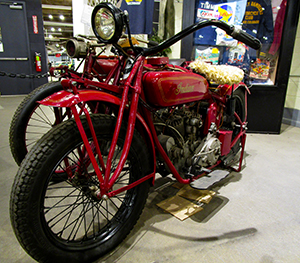
The Timme Motorcycle Collection
Come and see some incredible vintage Indian, Honda & other rare motorcycles! *Exhibits subject to change without notice*

Visit our Gallery
Make sure to visit our gallery. Our gallery features various die-cast models, art, and other artifacts related to transportation.